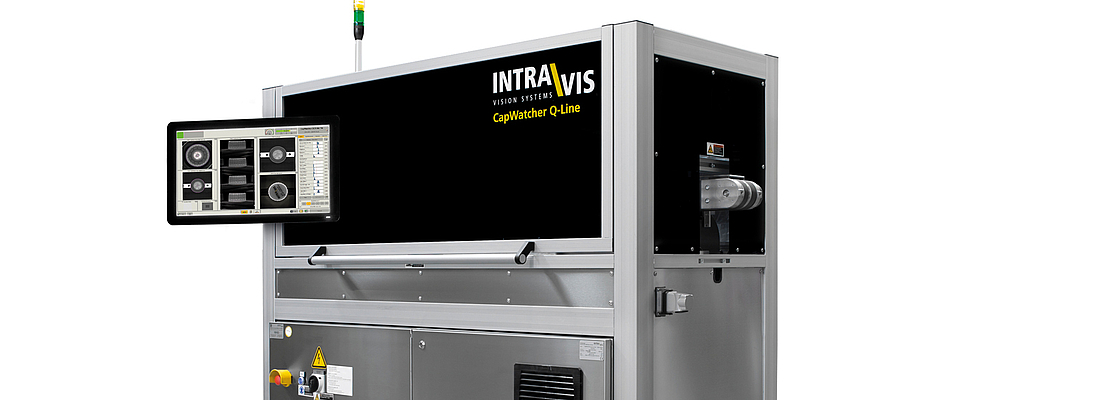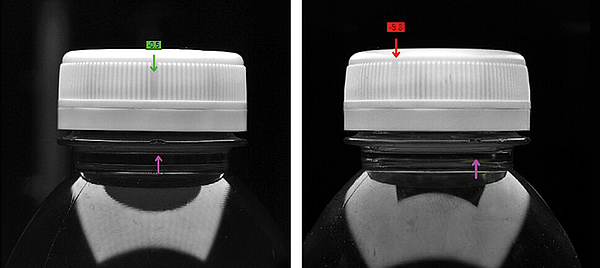

comPETence magazine | ONE:22 | Inspection and Digitalization
Aachen's innovative spirit around closures - How INTRAVIS is reinventing the closure inspection system
When talking about INTRAVIS’ innovations in 2022, it is helpful to look back into the past. “Of course, we were also impacted by the effects of Covid-19 in the past two years,” says CEO Dr. Gerd Fuhrmann. “Many customers were uncertain how the Covid situation would develop and, therefore, temporarily held back investments or postponed them altogether. Fortunately, this only had a slight impact on the incoming orders and annual turnover. At the same time, it gave us the opportunity to invest more time and effort into developing and testing new solutions. From today’s perspective, I can confirm that these two years have brought us immense progress in our new developments, enabling us to introduce many innovations this year. I expect us to be very well positioned for this year and into the future.”
After INTRAVIS introduced new systems in the decoration area – the SleeveWatcher can be mentioned here – as well as extensions to its existing portfolio systems in the last two years, for 2022, the company has focused on developments related to closures. Markus Juppe, CMO at INTRAVIS, explains this as follows: “We have used the last two years to establish specific solutions that have also been implemented for inspecting Covid test tubes, as one example. As a systemcritical supplier, INTRAVIS is always at the forefront and, accordingly, we have considered international developments such as the introduction of tethered caps in our development plan. Therefore, our customers can already look forward to several innovations in 2022 around closure inspection.”
Tethered caps ready with the CapWatcher Q-Line
With the introduction of tethered caps, the closure industry is facing its largest change in many years. The European Union’s requirement that closures must be permanently attached to the bottle is forcing every closure manufacturer to change their closure designs. Of course, these design changes also have an impact on closure inspection systems.
In recent years, INTRAVIS has invested a lot of time in the further development of the CapWatcher Q-Line to perfectly adapt the system to the challenges of tethered cap inspection. A new approach has already been taken in singularization.
Whereas previously a star wheel from above was used to separate the closures, now a form-fitting lateral star wheel separation has been chosen. Gerd Fuhrmann explains this as follows: “The outer shape and stability of tethered caps certainly pose a challenge - especially as closures continue to become thinner and thinner. With the form-fitting lateral star wheel separation, we always ensure perfect separation and positioning of the closures, even at the highest speed, and at the same time handle them gently and carefully.” In addition, the separation is simplified by the fact that the tethered caps no longer need to be oriented – thanks to software logic that has been optimized for the now rotationally asymmetrical external appearance of the closures.
Even special features of tethered caps are no challenge for the CapWatcher Q-Line. “Consider, for example, the internal closure aids, the so-called CAM’s”, continues Gerd Fuhrmann. “With our patented non-contact microhole inspection, we no longer have to dip into the closure to be able to detect microholes with 100% certainty.” Normally, an electrode dips into the closures during high-voltage inspection, with the risk of damaging internal elements.
Dr.-Ing. Gerd Fuhrmann
''From today’s perspective, I can confirm that the Covid years have brought us immense progress in our new developments, enabling us to introduce many innovations this year. I expect us to be very well positioned for this year and into the future.''
The CapWatcher Q-Line has the flexibility to be used for many different tethered cap designs - regardless if caps are produced in an injection molding or compression molding process, whether they are one-piece or multi-piece, and whether the tethered features are molded or slitted.
“With all these further developments, we are optimally prepared for the challenges in the inspection of tethered caps. Thus, even in the currently changing situation, we can offer our customers the usual assurance that their closures meet the desired quality standards,” Gerd Fuhrmann tells with confidence.
INTRAVIS increasingly applicable in wet areas
Another innovation for this year will be the CapWatcher FC. With this system, INTRAVIS extends the scope of application of its inspection systems into the wet area of filling lines. In addition to inspecting for damage, presence and correct positioning of the closure, the fill level of the bottle is also examined.

The highlight among the inspections, however, is the control of the application angle. With the use of three side cameras, the CapWatcher FC uses index marks to inspect whether the closure is screwed down to its target position - or whether it is screwed down too far or not far enough. Marks on the closure and on the neck support ring that are barely perceptible to the end user are detected by the system. If these marks are within a tolerated range to each other, the system assumes that the closure has been completely and correctly applied – and the bottle is released for packaging. This new technology is being used here for the first time. Of particular interest to the production line operators are the comprehensive statistics that correlate the average application angle with the capping head. Thus, the operator can detect a malfunction of a capping head at short notice.
All in all, the system has even more innovations and highlights. Gerd Fuhrmann mentions, “The CapWatcher FC is an INTRAVIS system intended exclusively for the wet area of the filling line behind the filler and capper. We have already been able to gain experience in the wet area in various projects over the past few years, which we are now using and transferring to this stand alone product.” Based on this experience, the CapWatcher FC - both the inspection unit itself and the related electrical cabinet - is, for instance, completely splash-proof according to the IP65 standard as well as designed in accordance with the bottlers’ hygienic measures. This makes cleaning the system easy and uncomplicated, even with aggressive methods and means.
The final highlight of the CapWatcher FC is the availability of process-relevant information through the IntraVision software. Particularly, this involves analyses and reports that a machine operator can use to immediately identify serial defects and trends. IntraVision data, for example, helps to draw conclusions about possible misadjustments or defects in upstream equipment such as the filler or capper. Early detection of recurring defects supports the machine operator in maintaining the output rate of the production line at a consistently high level.
Software based on Deep Learning
In addition to further developments and a new system, INTRAVIS also launches an innovation in the software itself this year. Specifically, this involves equipping individual modules with a new core algorithm based on Deep Learning. Gerd Fuhrmann describes it this way: “The heart of our systems is our self-developed software, IntraVision. We have been using Deep Learning algorithms in it for quite some time. As a result of our constant development effort, we have succeeded in applying Deep Learning to the detection of anomalies.” Anomalies are any deviations from a pre-defined, optimal standard - including deviations that would be difficult for the customer to describe in advance.
The biggest advantage in the use of this new technology lies in teaching the software. Whereas previously a large number of samples were needed for each type of defect to be found during development, the new logic changes the approach by 180°. The software is first trained based on a pool of good parts and thus learns how the optimally identify their appearance. This pool of good parts is necessary in order to evaluate natural variations as “OK parts” on the one hand, but also to evaluate small, real defects as “not OK parts” on the other hand. The quality of what has been learned is then checked and optimized on the basis of bad part samples. In the subsequent real production process, everything that does not correspond to this trained optimum is sorted out. By means of the adjustment options, the operator still has the possibility to influence the sensitivity of the inspection and, thus, the ratio between efficiency and object quality.

“The special feature of this new software technology is its fast-learning capability. For example, if I teach the software with closures in different rotational positions, I do not need to align asymmetrical closures during inspection. And if I teach the system with other closure designs, it can also immediately inspect these as well,” says Gerd Fuhrmann, summarizing the possibilities of the new technology.
______________________
Facts & Figures
INTRAVIS GmbH is a market leader for optical inspection systems for quality testing in the plastics packaging industry. With its headquarters and production facility in Aachen, the owner-managed company has more than 25 years of experience in optical quality testing, with more than 200 employees. INTRAVIS has subsidiaries, sales and service offices all over the world.
______________________
Conclusion
INTRAVIS is going into this year with strong new developments, both in terms of software and hardware. Deep learning algorithms make the system setup easier, help to make even more accurate decisions, and have the potential to solve problems on a wide scale. Developments for the wet area also extend INTRAVIS’ fields of application into the filling area.
In addition, everyone can be curious about what else the Aachen-based company will present this year. Because: INTRAVIS has already announced that further innovations can be expected at the two trade fairs, Drinktec and K Show, taking place in the fall of this year.
______________________
Photos: INTRAVIS
The comPETence center provides your organisation with a dynamic, cost effective way to promote your products and services.

magazine
Find our premium articles, interviews, reports and more
in 3 issues in 2025.




